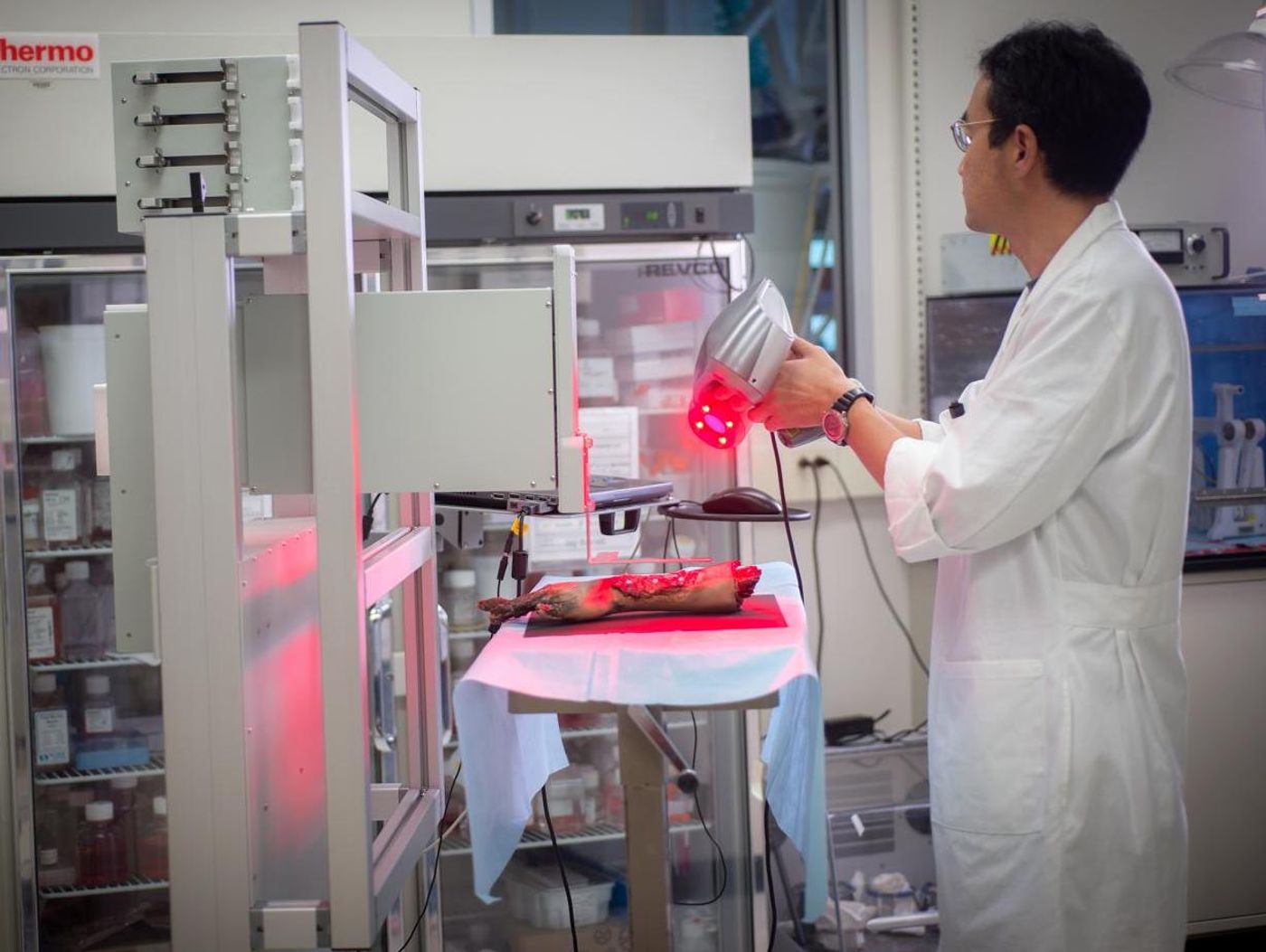A Skin Bioprinter May Soon Heal Wounds Rapidly
It may sound like science fiction, but researchers are working on developing a printer that could be filled with a patient’s cells, and then used in the clinic to print new layers of skin so that burns or wounds could heal more quickly. Scientists at the Wake Forest Institute for Regenerative Medicine (WFIRM) have already created the world’s first mobile skin bioprinter, that can print bilayered 'skin' directly into wounds. The work has been published in Scientific Reports.
"The unique aspect of this technology is the mobility of the system and the ability to provide on-site management of extensive wounds by scanning and measuring them in order to deposit the cells directly where they are needed to create skin," explained the lead author of the report Sean Murphy, Ph.D., a WFIRM assistant professor.
Large wounds that are chronic or challenging to treat are costly, and negatively impact the lives of millions of Americans. Burns present many challenges as well; they are susceptible to infection, for example. It’s thought that burn injuries cause between ten and thirty percent of conventional combat casualties.
In this new technology, the two main kinds of skin cells (epidermal keratinocytes and dermal fibroblasts) are isolated from uninjured tissue. That supply is expanded and mixed into a hydrogel, which is then put into the bioprinter. With advanced imaging technology, the wound is scanned and fed into software, and print heads are thus informed about where in the wound to send which cells. Keratinocytes are found in the outermost layer while fibroblasts aid with healing and synthesize collagen. Thus, the normal structure and function of skin can be replicated, accelerating damage repair.
The system was tested on pre-clinical models, as seen in the photo and the video. The next step is to try the technology on humans.
"The technology has the potential to eliminate the need for painful skin grafts that cause further disfigurement for patients suffering from large wounds or burns," said study co-author and WFIRM Director Anthony Atala, MD. "A mobile bioprinter that can provide on-site management of extensive wounds could help to accelerate the delivery of care and decrease costs for patients."
"If you deliver the patient's own cells, they do actively contribute to wound healing by organizing up front to start the healing process much faster," noted study co-author James Yoo, MD, Ph.D. "While there are other types of wound healing products available to treat wounds and help them close, those products don't actually contribute directly to the creation of skin."
Sources: AAAS/Eurekalert! via Wake Forest Baptist Medical Center, Scientific Reports










